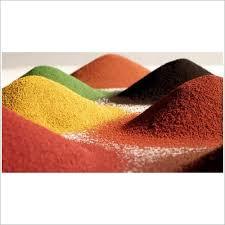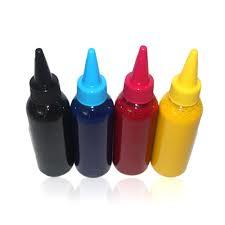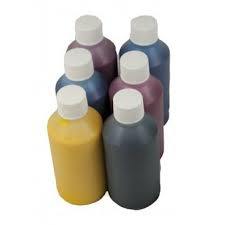
Inorganic Pigments
300 INR/Kilograms
Product Details:
- Shelf Life 24 Months
- Place of Origin India
- Molecular Formula Fe2O3, PbCrO4, ZnO, TiO2 or as per specific pigment type
- Size Customizable, Standard: 25 kg bags
- CAS No 68187-11-1
- EINECS No 269-121-3
- Chemical Name Inorganic Pigment
- Click to View more
X
Inorganic Pigments Price And Quantity
- 500 , , Kilograms
- 300 INR/Kilograms
Inorganic Pigments Product Specifications
- Ceramic Pigments, Paints, Coating, Construction, Plastics, Inks, Rubber
- 24 Months
- 68187-11-1
- Powder
- Industrial Grade
- Industrial, Decorative, Architectural, Automotive, Plastic & Polymer Industries
- Black, Red, Yellow, Green, Blue (various shades available)
- Inorganic Pigment
- Customizable, Standard: 25 kg bags
- Solid
- India
- Fe2O3, PbCrO4, ZnO, TiO2 or as per specific pigment type
- Mixing, Blending, Dispersion
- Inorganic Pigment
- 99%
- 269-121-3
Inorganic Pigments Trade Information
- 1000 , , Kilograms Per Day
- 2-5 Days
Product Description
Inorganic Pigments
Product Details:
| Packaging Type | Bag |
| Packaging Size | 10kg, 20kg |
| Usage | Industrial |
| Available Color | Yellow,Red,Black,Green,Orange,Blue |
| Types | Organic |
| Form | Powder |
Characteristic:
- Optimum dispersion in respective medium as per application area.
- Good colour value
- Excellent AR/SR resistance
- Passes EN test parameters.
- Excellent performance & cost saving
Used In:
- Paints
- Inks
- Coatings
- Plastics & Polymers
- Concrete
Exceptional Thermal and Weather Performance
Our inorganic pigments are crafted to deliver remarkable heat stability (up to 1200C) and superior resistance to UV and environmental exposure. This ensures long-lasting color integrity for ceramics, paints, plastics, and more, even under demanding conditions.
Versatile Application Across Industries
Formulated for both industrial and decorative purposes, these pigments excel in paints, coatings, ceramics, plastics, inks, and construction materials. Their non-toxic, lead-free composition and excellent dispersion make them suitable for use in automotive, architectural, and polymer industries.
FAQs of Inorganic Pigments:
Q: How should inorganic pigments be incorporated into different materials?
A: Inorganic pigments are typically added by mixing, blending, or dispersion into the base material. Adjustments can be made for viscosity and consistency depending on the application method, such as in paints, plastics, or ceramics.Q: What makes these inorganic pigments suitable for outdoor or high-heat environments?
A: These pigments feature outstanding heat stability (up to 1200C) and exceptional UV/weather resistance, ensuring minimal color fading or degradation in demanding outdoor or high-temperature settings.Q: When is it recommended to use lead-free grades of inorganic pigments?
A: Lead-free grades should be selected for applications with stringent safety or environmental regulations, such as in consumer goods, architectural finishes, and areas requiring non-toxic materials.Q: Where are these pigments commonly used?
A: Common applications include ceramics, paints, coatings, construction materials, plastics, inks, rubbers, and automotive finishes. Their versatility allows for use across a wide range of industrial, commercial, and decorative sectors.Q: What process ensures the non-toxic nature of these pigments?
A: The manufacturing process strictly avoids hazardous substances like lead, resulting in non-toxic, environmentally-friendly pigments. Product consistency and purity (up to 99%) are maintained via quality control standards.Q: What are the benefits of the customizable particle size and packaging options available?
A: Customizable particle sizes (0.515 microns) help optimize pigment dispersion and application properties. Flexible packaging, including 25 kg or 50 kg HDPE bags or custom packing, meets unique logistical and handling requirements.Tell us about your requirement

Price:
Quantity
Select Unit
- 50
- 100
- 200
- 250
- 500
- 1000+
Additional detail
Mobile number
Email








 Send Inquiry
Send Inquiry Send SMS
Send SMS